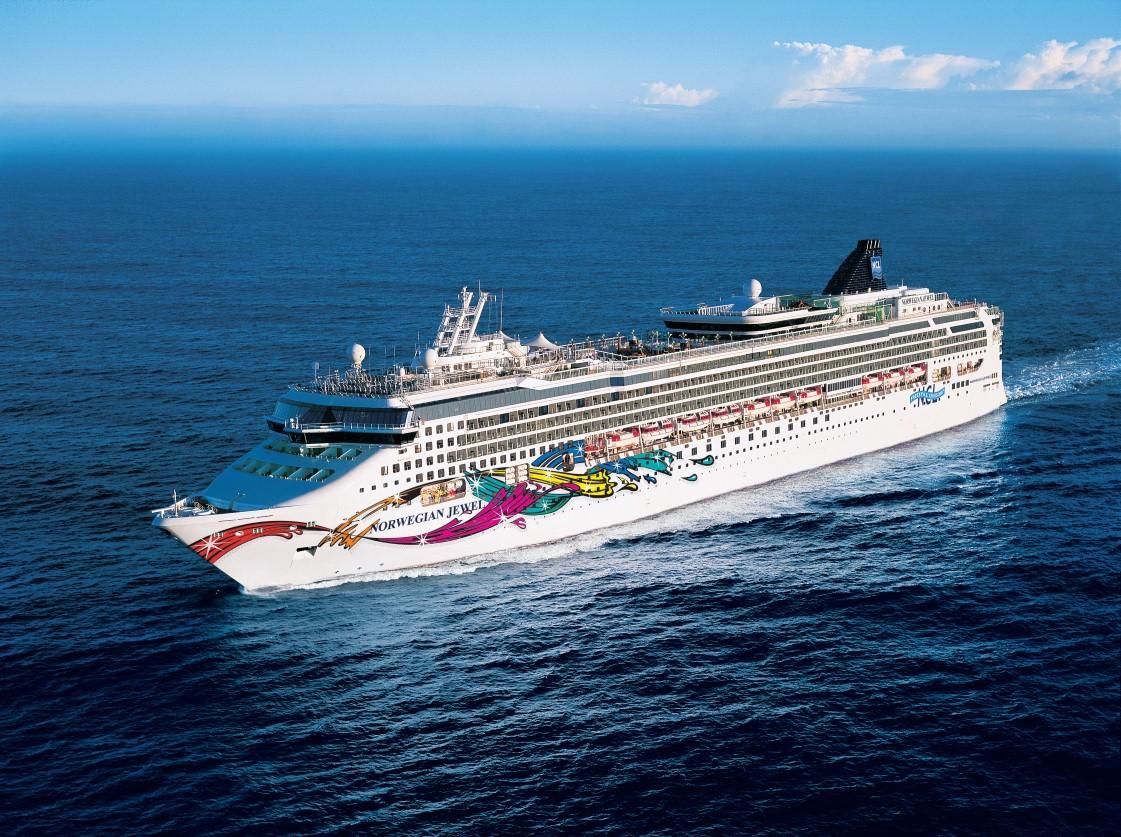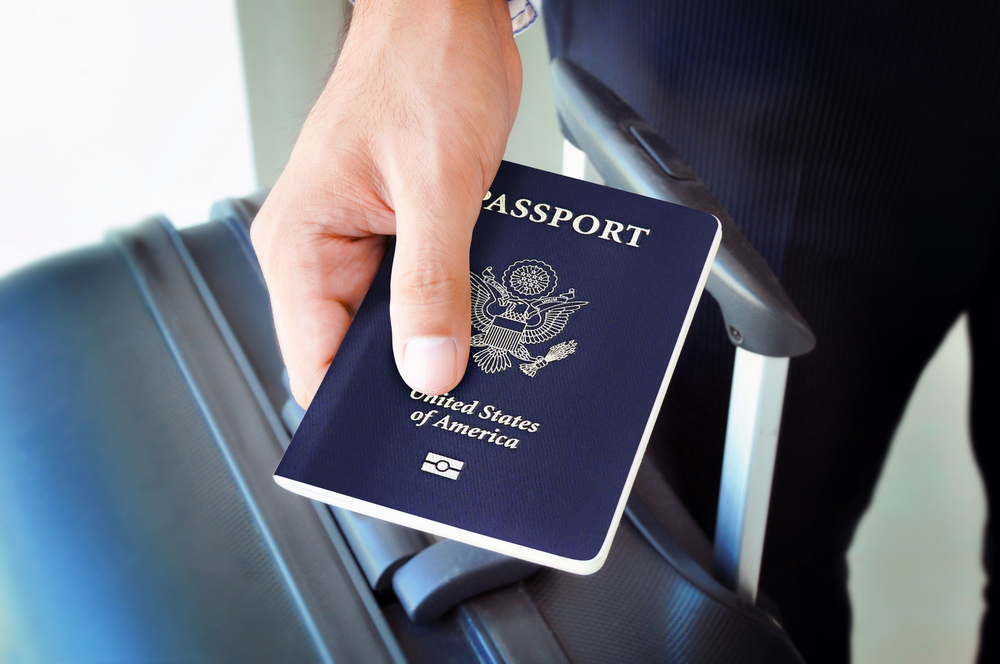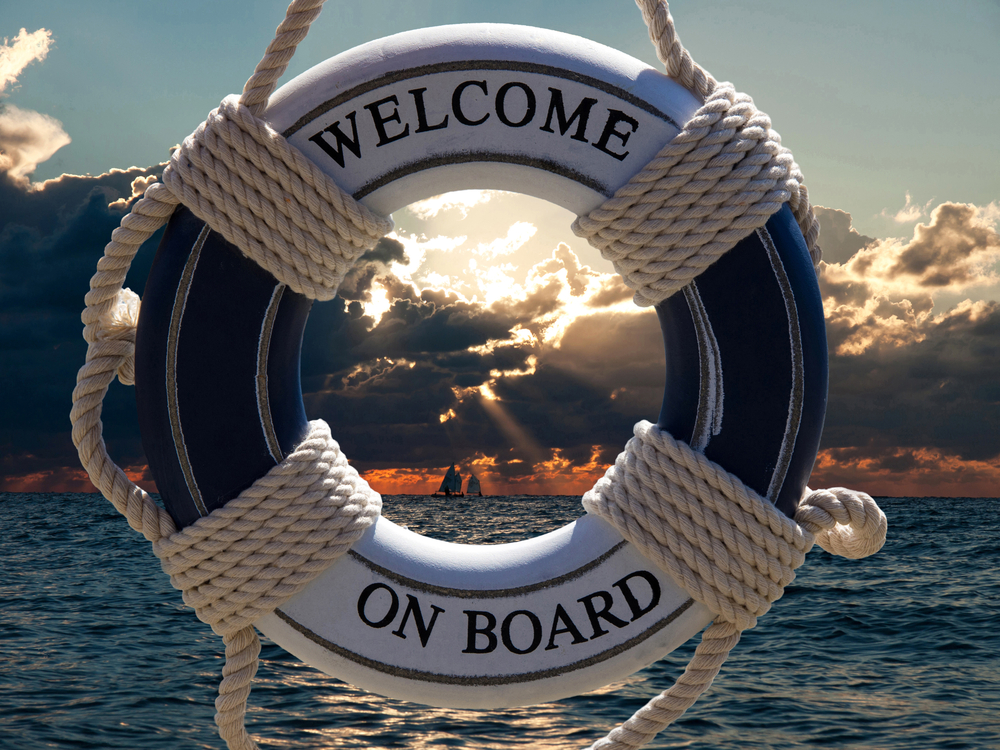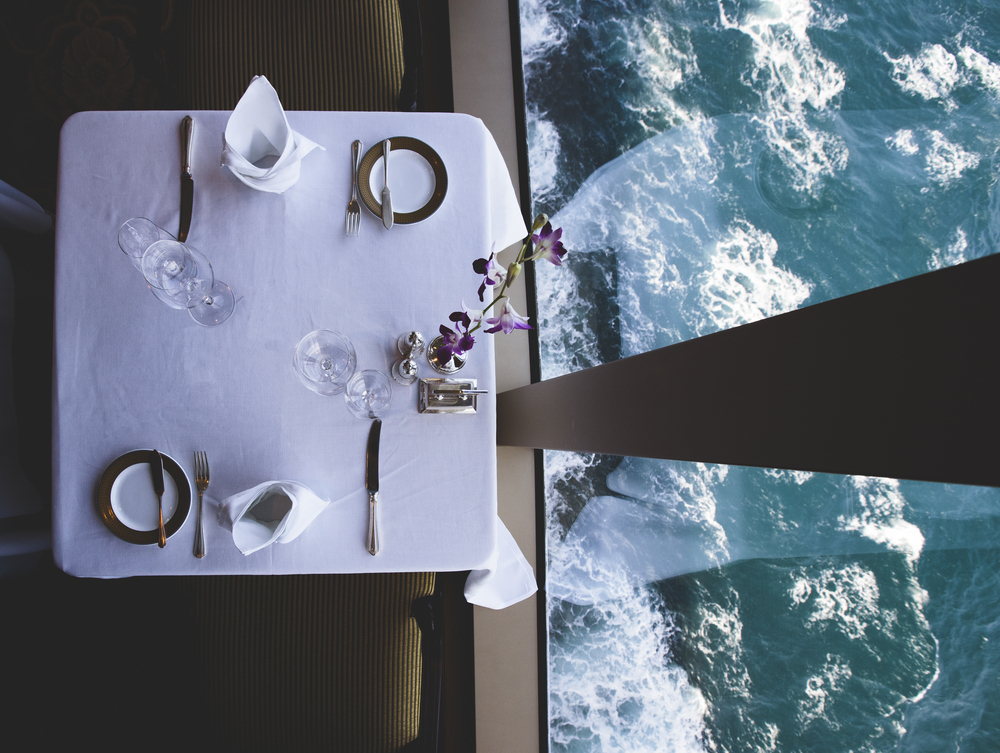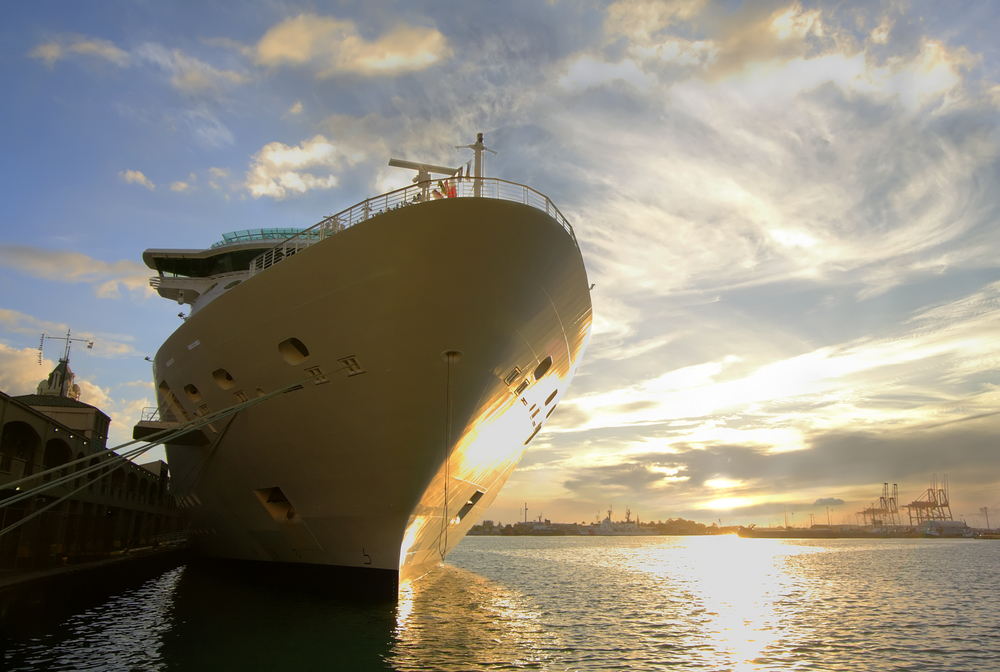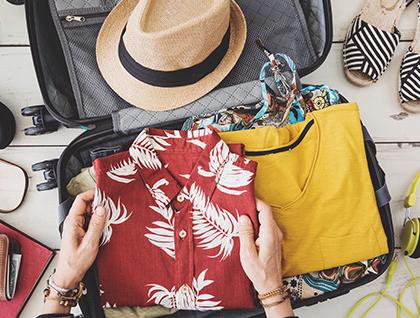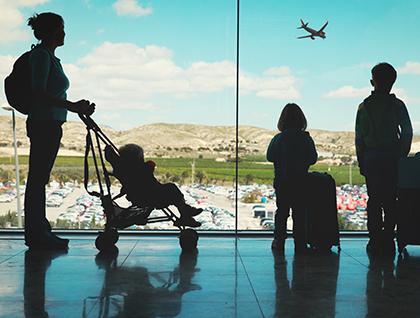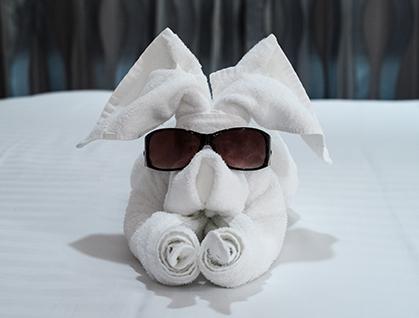Cruising 101: Quickly Cruise Through the Basics
LT Globetrotter
Cruising comes in all shapes, sizes, and experiences, but there are some basic things to always keep in mind. See if you already know the answers to these important cruising questions.
Do I need a passport to go on a cruise?
Maybe.
OK. We shouldn’t start off so vague.
Bring it along. We’ve seen this happen – moments, literally, before embarkation, as most of the passengers waited to hop aboard and head to St. John, Canada, all with their long johns and wool sweaters packed, an announcement came over the PA system stating that due to bad weather conditions they would all actually be heading to bright, sunny, Bermuda. In other words – the seas dictate where you’re going. Safety comes first. And you might as well be extra, extra safe and bring along your passport. It can’t hurt, just in case you’re headed in the complete opposite direction you were expecting to and might just need it.
And though you might not need it in many cases, you’ll need identification and proof of citizenship to board and many ports already require a passport anyway. You might also need to fly out for unforeseen reasons later on, whether it being illness, weather, or any other reason, which would make having your passport a necessity. If for some reason you are so averse to bringing it, make sure to check with your cruise line of choice. But if you ask us?
Pack the passport.
How much luggage can I take onboard?
In theory – quite a bit. Pragmatically? Pack light. Though cruise ships aren’t like planes, staterooms are also not hotel suites, for the most part. Space can be tight, so every single extra bag you bring will take up a certain amount of space. If you have sturdy bags that can double as a chaise lounge, by all means pack like you would a big journey. But most luggage doesn’t come with this capability, so you’ll probably just be tripping over it the entire time.
What’s the process like boarding a cruise ship?
Boarding, nautically known as embarkation, is similar to boarding a plane in that there are certain regulations, a specific time to arrive and check-in, and, of course, security. It’s obviously worth it for the fun you’ll have. Most cruise lines have transportation available from airports and usually have their own paid parking lot where you can leave your car. A porter will most likely come by to take your bags off your hands and you’ll sort of just… well… wait in line.
To secure your seat (stateroom) and admittance aboard the ship, complete online check-in probably no later than three days before the cruise. If you don’t, you’ll have to complete the process at the pier (not impossible, but not encouraged) hours before boarding time. Cut it too close and you might be watching the ship sail off into the sunset instead of being on it!
Once on board, the fun begins. Literally. There is that little muster drill you’ll have to take part of, but it goes fast and you could get right back to having fun (and the safety tips and procedures are good to know anyway – so pay attention!)
What is and isn’t included on a cruise?
Generally included: most meals and snacks, room service, certain activities, entertainment, ocean transport (duh), and non-alcoholic beverages. Not included are things like optional shore excursions, gift shop purchases, beauty salon services, spa treatments, and all those photos they’ll take of you. You’ll be able to find professionally done photos of you and your loved one(s) essentially at all times when cruising, for a price. As for those alcoholic beverages – you can take care of the cost before you sail by purchasing the cruise line’s designated drink package. You can even prepay your tips, so you won’t have to at the end of the long seaward exploration. As for the casino, we are here to tell you – and not necessarily encourage you – that we have seen people pay off their entire cruise fare by winning at the onboard casino. Though maybe not at the level of Vegas in size, these casinos are just as fair, and the games just as much fun.
The cruise line will give you a complete bill at the end of the cruise – since you will probably be using your room key for purchases during the trip (cash can be used at the casino) – and you’ll be able to settle up (and/or dispute) all purchases made.
Do I have to eat at certain times in the day?
Ha! So naive, you first-time cruiser you! When it comes to food, there’s lots of it, at almost every turn, and at all times. Will there always be an endless course meal with wait service at your beck and call? No. Will there be snacks and other tasty treats to grab if you just get a little hungry? Yes.
Here’s the set-up, usually:
There will be four ways to eat meals – and at the pace cruise ships are evolving, maybe more by the time you’re done reading this: Traditional dining, open dining, casual dining, and specialty dining.
Traditional is referring to that endless coursed meal where you all will dress up nice and go to your assigned table at the assigned time, and where you’ll be all jocular and fun with strangers over a yummy meal and get to know your waiter who will have your ordering habits memorized probably after the first night. One of the really cool things about cruising is having the same wait team every night for dinner. They make your experience very personalized. And though this may seem like a specifically three or four course dinner with fancy accoutrement every which way, just order up that favorite dish again. They’ll bring it right to you.
Open dining is referring to all those pizza and hot dog stands and sandwich shops always open for you to grab a quick bite. The benefit, of course, is eating when you’re hungry.
Casual dining is where the mega cruise ships get their mythical stamp of being one giant food fest: the buffet. The big, mythical buffet. And yes – it’s tremendous and awesome. We’re not going to knock it at all. Open for three meals a day, sit down and indulge.
Specialty dining is self-explanatory enough – you’ll pay an extra charge for specific cuisine, by reservation. These include restaurants ranging from Italian, French, Asian, Mexican, to steakhouses and even brewhouses.
Will I get seasick? What happens if I do?
Ahh, seasickness. Yes – we all know it’s a thing. We’re not going to stand on our high horse and act like it doesn’t exist. Will you get sick? That depends on you, of course. Get sick on smaller boats? There’s a good chance you won’t on a mega ship. The movement, in calm seas, is barely noticeable. In fact, we daresay, calming. Ships today are equipped with state-of-the-art motion stabilizers that markedly cut down on that turbulent feeling (it’s definitely nowhere near what it’s like on a plane), and other advanced technology to ensure you’re avoiding rough seas. If you think you will – or do – get sick, just be prepared with medication, which is also obviously available for a charge on board. And if it gets really bad, all cruise ships have medical facilities and doctors on staff to help.
Is there onboard Wi-Fi? Do I have to pay for it?
Long gone are the cruising days when you’d have to find the ole “Internet Café” to then log on to check your email. For a cost – sometimes as low as $5 a day – you can have all-out Wi-Fi access everywhere, from the bar, pool, Ping-Pong tables and your room.
A note on phone calls. Remember: even though it feels like you sort of just glide around going nowhere, you’ll be in international waters and most likely will dock outside of the country. Don’t get lost at sea with high roaming charges on phone calls! Contact your cell carrier beforehand if you think you’ll need to make calls, and in the case of an emergency, the cruise ship should have a phone on board for you to use.
What happens when we dock at a port?
Fun. What else?
Enjoy exciting shore excursions, or just explore the destination on your own. You could also just remain on board if you’d like. At the end of the day, you’re free to do whatever, including coming and going as you please. Just keep in mind you’ll probably have to present credentials and definitely your boarding card or pass to get back on, so don’t forget it! Another important piece of advice is to get back in time (and with time to spare) before the ship is scheduled to depart. They tend to leave promptly and exactly when they said they would – with or without you.
Hope you have that passport for the flight back!
What happens at the end of the cruise?
You go home. Well – first you’re going to leave your packed luggage (minus carry-ons) outside of your stateroom door the night before it’s time to leave. It might seem weird putting all your stuff outside of your room and then sleeping inside the room, but you’ll want to trust-fall on this one. This is so the cruise line can get your bags out for unloading when the ship docks, making it easier for you to get off. It’s like checking your bag onto a plane. Each cruise line may have a slightly different process, but it will most likely involve a list of disembarking instructions – really spelled out for you – with color-coded or numbered tags to attach to your luggage. The ship’s personnel will take care of it from there. Once your bag is out there and you’re asleep, there’s no getting it back until you’re off the ship, so hold onto anything you will need the next morning.
Once you’re off the ship, you’ll go through US Immigration and Customs to declare all that fun you had before heading home.
Remember: this information doesn’t apply to every cruise line. Make sure you check with your travel consultant about the rules and regulations for your particular trip. For more information about cruising, read more in our Cruise Guide.

